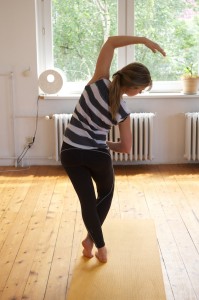 In our last blog an Intro to Yoga Nidra, we talked about this valuable technique of conscious deep sleep. With muscular, emotional and mental tensions to calm, and the conscious, subconscious and unconscious layers to sort through, Yoga Nidra must employ different methods to get through all these potential areas of stress to bring us positive change in our lives.
In our last blog an Intro to Yoga Nidra, we talked about this valuable technique of conscious deep sleep. With muscular, emotional and mental tensions to calm, and the conscious, subconscious and unconscious layers to sort through, Yoga Nidra must employ different methods to get through all these potential areas of stress to bring us positive change in our lives.
Rotation of Consciousness
The rotation of consciousness involves taking the practitioner’s awareness to different parts of the body. It is said that wherever we center our attention it becomes the place where we also center our energy. Bringing ones awareness to each part of the body increases the energy in that part and allows the participant to identify and relax tensions there.
Auditory Focus
Often in our Yoga Nidra class we concentrate on different sounds. This technique helps the students to withdraw from the other senses (vision, taste, feeling, smells) and only leave one channel, the auditory one, open. The idea is that the participant stays aware of the directions coming from the instructor, but practices detachment from all other stimuli. This focus can increase a feeling of inner peace because when the mind is not getting overwhelmed with input, it is less likely to create intense mental fluctuations and more likely to be calm.
Opposite Sensations
Students are asked to focus on experiencing opposite sensations in Yoga Nidra. For example heaviness/lightness, sadness/elation, cold/warm. As previously said, emotional tension arises from the duality of emotions. By asking the student to temporarily experience emotions that they are not presently feeling, and then to experience the opposite emotion, this technique is used to neutralize emotions. This often allows the practitioner to go into a deeper state of relaxation, one that lies beyond the limitations of their emotional world.
Rapid Imagery
Rapid imagery involves a number of different things being named in quick succession and the student being asked to visualize each of them, then let them go so that they can move on to the next one. Because the mind tends to wander on its own and create its own fluctuations, this practice can help regulate this activity. For example when the image “waves breaking on a deserted beach” is given, then one could start thinking of the last time they were on the beach. They then think of who they were with, the emotions this caused and then start analyzing that past situation. But before this can happen in Yoga Nidra practice, the next image is given, considered and then asked to be released. It is a method of learning how to guide the mind so that we can learn to visualize and to release images that produce subconscious reactions. This, taken into our everyday life, can decrease our levels of stress and help us to achieve a more consistent sense of wellbeing.













 of all the falling stars I have seen in my life. This thought brings me onto all the wishes I have made on those stars. That, in turn, makes me think of unfulfilled wishes, which reminds me that I’m unhappy. When I think about being unhappy, that tenses up my chest. Feeling the tightness in my chest reminds me that I have to buy an inhaler for my asthma- and why am I unhappy anyway?…
of all the falling stars I have seen in my life. This thought brings me onto all the wishes I have made on those stars. That, in turn, makes me think of unfulfilled wishes, which reminds me that I’m unhappy. When I think about being unhappy, that tenses up my chest. Feeling the tightness in my chest reminds me that I have to buy an inhaler for my asthma- and why am I unhappy anyway?…



